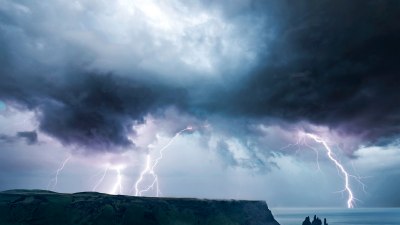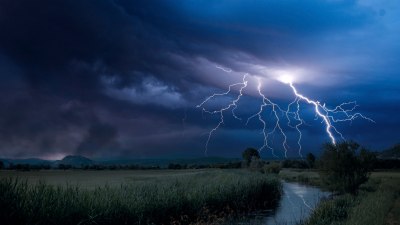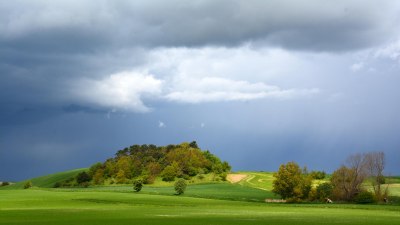The Forgotten Art of Reading Clouds to Predict Weather
Discover the ancient skill of cloud reading and how it can enhance our understanding of weather patterns.

This image was created with the assistance of Freepik
In our modern world, where technology dominates virtually every aspect of our lives, many ancient arts and skills have been lost to time. One such skill is the ability to read clouds to predict the weather. Centuries ago, people were deeply attuned to the natural world around them, relying on the signs offered by the sky to determine impending weather changes. Understanding cloud formations not only helped them prepare for storms but also guided their agricultural practices and daily activities. In this article, we’ll delve into the fascinating world of cloud reading, exploring its history, significance, and the different types of clouds that can help us forecast the weather.
The practice of cloud reading can be traced back thousands of years. Ancient cultures, from the Greeks to the Indigenous tribes of North America, developed their own methods for interpreting the sky. The philosopher Aristotle documented many of these observations in his work, Meteorology, where he categorized clouds based on their shape and behavior. This early study laid the groundwork for our understanding of meteorology, yet in today's fast-paced lifestyle, we often overlook these natural indicators that have guided humanity for generations.
The Importance of Clouds in Weather Prediction
Clouds play a crucial role in the Earth's climate system, influencing temperature, precipitation, and overall weather conditions. They are formed through the condensation of water vapor in the atmosphere, and their appearance can be a strong indicator of upcoming weather changes. By learning how to read clouds, individuals can gain insight into whether a sunny day is on the horizon or if a storm is approaching.
Different Types of Clouds and Their Meanings
There are several different types of clouds, each with specific characteristics that can indicate various weather patterns. Here are some of the most notable types of clouds to look out for:
Cumulus Clouds
Cumulus clouds are those fluffy, white clouds often resembling cotton balls. They typically indicate fair weather when they are scattered across the sky. However, if these clouds start to develop upward into larger formations, they can evolve into cumulonimbus clouds, which signal thunderstorms. Recognizing this transition is crucial for weather prediction.
Stratus Clouds
Stratus clouds appear as low, gray layers that can cover the entire sky. They often bring light rain or drizzle, and their presence can indicate a prolonged period of cloudy weather. If you notice these clouds hanging low, prepare for a chance of rain!
Cirrus Clouds
Cirrus clouds are high-altitude clouds that appear wispy and thin. They are composed of ice crystals and are often seen when a change in weather is on the way. Cirrus clouds can indicate that a warm front is approaching, potentially leading to rain or thunderstorms within the next 24 hours.
Nimbus Clouds
Nimbus clouds are dense, dark clouds that signify rain. When you see nimbostratus clouds, expect steady, continuous precipitation. Conversely, cumulonimbus clouds, also known as thunderheads, can bring severe weather, including thunderstorms, hail, and even tornadoes. Recognizing the severity of these formations can help individuals prepare for potentially hazardous weather conditions.
Cultural Perspectives on Cloud Reading
In Japan, the word for cloud, “kumo,” carries significant cultural weight. The Japanese have long held a reverence for the beauty of the sky and the symbolism associated with clouds. Understanding cloud patterns was essential for agricultural societies, as they relied on seasonable precipitation for rice cultivation. Hence, the art of reading clouds became intertwined with their cultural identity and survival.
Modern-Day Relevance of Cloud Reading
As we navigate to a more technologically driven world, the significance of cloud reading remains. While meteorological tools have become incredibly advanced, understanding the natural indicators that surround us can augment our knowledge of weather forecasting. Observation is key in understanding our environment, and glimpsing the way clouds shift and change can provide invaluable hints about what lies ahead.
Moreover, the continued preservation of this knowledge helps bridge the gap between modern science and ancient wisdom. As climate change increasingly affects weather patterns globally, learning to interpret these natural signs can be invaluable in adapting to our new reality.
Practical Tips for Reading Clouds
Here are some practical tips and techniques to start reading clouds effectively:
1. Observe Regularly
The best way to become proficient at reading clouds is to practice often. Spend time each day observing the sky and noting the different cloud formations you see. The more familiar you become with the different types, the better you will be at identifying them quickly.
2. Keep a Cloud Journal
Documenting your observations in a cloud journal can help you recognize patterns and understand how different clouds correlate with weather changes. Jot down the date, the types of clouds observed, and any weather outcomes that followed.
3. Learn the Names and Characteristics
Familiarize yourself with the names and characteristics of various clouds. Having a basic understanding of their appearance will enhance your ability to recognize changes and assess potential weather shifts.
4. Use Online Resources and Apps
There are numerous online resources and mobile applications designed to help with cloud identification. These can provide valuable insights into cloud types, weather forecasting, and other meteorological phenomena.
Clouds and Environmental Awareness
As society grapples with environmental challenges, the ability to read clouds and the weather offers a vital connection to nature and our surroundings. Understanding the subtle clues provided by the sky can rekindle a sense of respect for the environment and the forces that shape our daily lives.
In addition, this knowledge can foster a sense of community. When individuals engage in discussions about weather prediction based on cloud observations, they connect with one another and share experiences rooted in nature. Collaborative learning promotes deeper appreciation for our environment and encourages sustainable practices.
The art of reading clouds to predict weather may seem like a forgotten skill in our rapidly advancing world, but it holds a wealth of knowledge that deserves preservation. By reconnecting with this ancient practice, we open ourselves to a deeper understanding of the natural world and the factors that influence our climate. As we cultivate this skill, we not only enrich our lives but also pay homage to the generations before us who have relied on these insights for survival. Let us look upward, observe the heavens, and embrace the wisdom that clouds have to offer in our quest to understand the ever-changing face of the weather.











